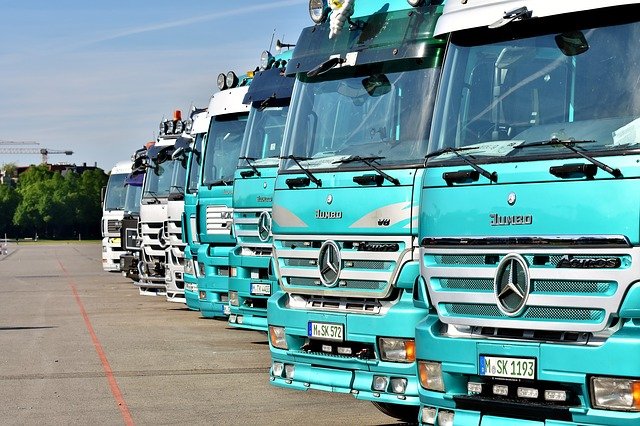The Tech Panda spoke to three experts about the possibility of an environmentally sustainable supply chain mobility in India.
Environmental sustainability is in. The world is slowly beginning to wake up to the fact that any process, when done in an environmentally sustainable manner, will last longer without hitches. If India can apply such sustainability to a pan India sector such as logistics, the country would be way ahead in its COP26 commitments and its fight against carbon emissions.
The logistics industry in India is among the largest in the world, with a market value of almost US$215 billion and a CAGR of 10.5%. However, despite its significant contribution to national growth, domestic supply chains are not sustainable or optimised because of reasons like high indirect costs, sub-par infrastructure, a lack of communication between parts, and outdated technological integration. What’s more, road transport itself is one of the largest contributors to environmental pollution, making sustainable logistics a need of the hour.
Read more: Why cities like Delhi Bangalore are at the forefront in EV adoption
Sustainable logistics can reduce Co2 emissions, noise pollution, accidents and bring alternatives to these to improve the productivity of all parties involved.
“Going green benefits manufacturing units not only in terms of raw materials, but it also reduces the overall cost of the process,” says Nitin O Mahipal, CEO and MD of Indian logistics company, Mega Pack and Carry.

Nitin O Mahipal
Going green benefits manufacturing units not only in terms of raw materials, but it also reduces the overall cost of the process
Is Environmental Sustainability in Logistics Achievable in India?
Logistics is a process that starts from storing goods, picking them up, hauling them across sometimes several states, and then last mile deliveries to places where infrastructure is still dismal. Is it even achievable to ensure that this entire process is environmentally sustainable?
The answer is yes, says Devin Narang, MD India of Sindicatum Sustainable Resource, also a speaker on renewable energies in the recent Horasis India 2022.

Devin Narang
There is a public demand for using environment friendly public transport
“The reason is that people are very conscious of the environment in India now. There is a public demand for using environment friendly public transport,” he says.
Mahipal too concurs that Indian consumers are more conscious about the environment footprint and are making more sustainable choices.
“Sustainable development is a collective responsibility,” he says.
According to a Capgemini Research Institute report, over 86% of Indian consumers are happy to buy sustainable products from organisations and 60% have already decreased buying from organisations they consider non-sustainable.
Does this mean India is all for having an environment friendly logistics sector right now?
Lalit Das, Founder and CEO of 3SC Solutions, an Indian SaaS based supply chain solution provider, says that the sector has yet to recognise how green logistics benefits their bottom line.

Lalit Das
Efficient fuel usage, cargo management, routing, and driving tactics make a huge difference in bringing down the expenditure
“Efficient fuel usage, cargo management, routing, and driving tactics make a huge difference in bringing down the expenditure. Performance indicators to track these factors are all but unfamiliar concepts for small transportation businesses that pose as logistics operators,” he explains.
“Due to customer indifference, being greener than one’s rivals is still not viewed favourably in the Indian logistics sector. The sector of reverse logistics that handles recovery—the retrieval of components, product recycling, and waste packaging disposal — is also essentially non-existent,” he adds.
“As evident in the rest of the world, emissions growth follows economic expansion. Hence, it makes sense that growth and environment are frequently seen to be mutually contradictory, particularly in India, which is eager to catch up with growth,” he says.
India’s CAGR for Co2 emissions by the transportation sector due to fossil fuel burning can roughly be calculated to 4.5% in the preceding ten years, compared to 1.16% in OECD nations, and 1.04% in North America.
How Can India Achieve Sustainable Logistics?
India is slowly but steadily building the required infrastructure. Recently, under the PM Gati Shakti National Master Plan (PMGS-NMP), the Unified Logistics Interface Platform (ULIP), a part of the National Logistics Policy (NLP), has set the roadmap for developing a more interconnected and tech-driven framework for reducing costs and improving operational efficiency in the Indian logistics sector.
The initiative can change the game for logistics, where costs are currently at 13-14% of GDP in India. Led by the NITI Aayog, the National Industrial Corridor Development Corporation Limited (NICDC) is developing this platform by gathering all the milestones under ULIP, to help the logistics sector grow.
The most effective initiatives at sustainability begin with a complete supply chain change
“The most effective initiatives at sustainability begin with a complete supply chain change,” says Mahipal. “We can achieve these by resetting the product and manufacturing, partnering with green suppliers, rerouting of travel, and reversing the logistics.”
Das says, to achieve this, the logistics industry must be digitalised, which may be done with the use of technologies like robots, automation, AI, IoT, blockchain, and big data analytics.
“Platforms that provide single-window access to the entire supply chain operation, along with fleet tracking and visibility, online truck sourcing, app support, digital paperwork, online payments, and digital proof of delivery, among other things, will pave the way,” he predicts.
Investments Are Coming
While India is a big country, the good thing in India, says Narang, is that we have an aggressive, renewable energy program.
“Be it solar wind or offshore wind, hybrid, bio energy, or green hydrogen, it’s all coming. It’s all happening here. And billions of dollars are coming into the country. Banks are willing to lend. Global capital and global debt are available to Indian companies to expand their renewable energy capacity, both as producers and suppliers of renewable energy as well as users of renewable power,” he says.
In September, DHL Supply Chain India announced an addition of 12 million square feet of capacity in multi-client sites in cities like Bangalore, Chennai, Kolkata, Mumbai, National Capital Region (NCR) and Pune.
With the environmental footprints of companies becoming more and more transparent, stakeholders have been paying greater attention towards greener organisations, which increases their valuation
“The reason for such investments can only be that the returns are evident. So renewable energy is here to stay,” he says.
On the domestic front, the two largest Indian industrial houses today, the Ambani group and the Adani Group, both are venturing into renewables. In January, Reliance Industries announced investments of US$80 billion in green energy, while in May, the Adani Group declared investments upto US$7.7 billion in two of Andhra Pradesh’s green energy projects.
As Mahipal says, “The supply chain generates 60% of carbon emissions globally, therefore, the correct step to reach net zero is to fix supply chain sustainability. If the supply chains are sustainable, it will benefit the environment by reducing use of fuel, making use of renewable energy, and dropping hazardous waste generated.”
“With the environmental footprints of companies becoming more and more transparent, stakeholders have been paying greater attention towards greener organisations, which increases their valuation. This is motivating more companies to create emission-reduction plans and monitor their own success in achieving them,” Das says.
Electric Vehicles is another solution that India has embraced with open arms. Companies like Ashok Leyland, Mahindra & Mahindra, and Tata Motors are not only investing in the EV industry but are also bringing the next big thing in Indian EV, electric commercial vehicles.
Read more: Companies solving the warehouse automation riddle though AI & IOT
Smaller green champions are also on the rise, like ReNew Power, Ather Energy, Charzer, and Autobot Energy.
Growing legal and transparency obligations, as well as a focus on sustainability among investors and customers, have led to an increase in the number of Indian enterprises that are actively addressing environmental and climatic change, paving the way for a truly sustainable logistics industry in India.












